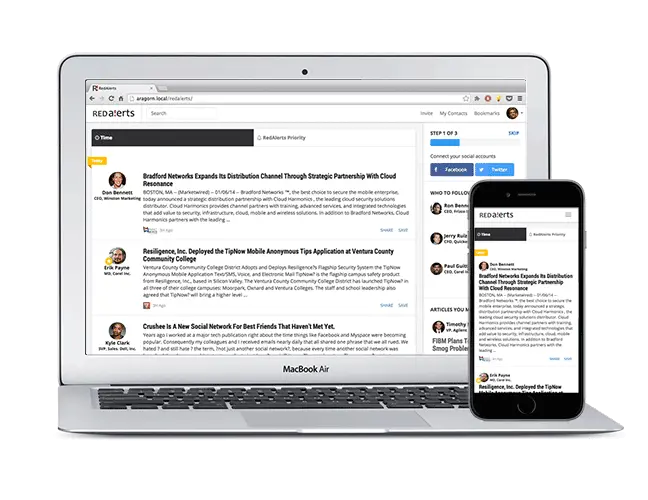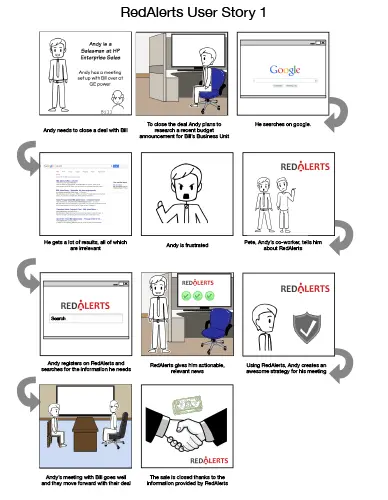RedAlerts
UX Portfolio
Sales Tool
RedAlerts
When Social Networks Meet Sales Strategy
The Brief
A simple ask: help sales professionals use their networks better. But anyone who's worked in sales knows there's nothing simple about relationships, timing, or knowing when a LinkedIn update means "I'm ready to buy."

The client wanted an application that would turn social media noise into sales signal. Not another CRM. Not another social monitoring tool. Something that could actually help salespeople leverage their existing relationships without being creepy about it.
Getting Under the Hood
Sales is weird. It's part psychology, part timing, part genuine relationship building, and part just showing up at the right moment. To design something useful, I needed to understand how top performers actually work.
I spent weeks shadowing sales teams - sitting in on calls, watching them scroll through LinkedIn during coffee breaks, observing how they mentally catalog information about prospects. The contextual inquiry revealed something interesting: the best salespeople are essentially human algorithms, constantly processing social signals and relationship data.
What I discovered:
- They remember everything but track nothing systematically
- They're drowning in social media updates but starving for actionable intelligence
- They have great instincts about timing but terrible tools for execution
- They're relationship-focused but working with transaction-focused software
The Users (Real People, Not Personas)
Forget the typical "enterprise account executive" personas. Real salespeople are messier:
Janet sells enterprise software and has 847 LinkedIn connections she can't keep track of. She finds out about job changes three weeks too late and kicks herself every time.
Mike is in business development and treats every social interaction like a potential lead. He needs to know when someone's company just got funding, when they're hiring, when they're complaining about their current vendor.
Sarah manages a sales team and watches her reps miss obvious opportunities because nobody's paying attention to the signals hiding in plain sight.

Design Direction: Invisible Intelligence
The core principle: make the technology disappear. Salespeople shouldn't feel like they're using a "social monitoring tool" - they should feel like they just got really, really good at paying attention.
I focused on three key workflows: 1. Ambient awareness - surface relevant information without creating noise 2. Perfect timing - help users recognize and act on optimal moments 3. Relationship depth - track engagement quality, not just frequency

The Interface Challenge
Sales tools are notoriously ugly. Functional, maybe, but ugly. The visual design needed to feel more like a premium consumer app than enterprise software. Clean typography wasn't just aesthetic - it was about respect. These are people who live on their phones and need something that doesn't look like it was designed in 2003.
The logo and icon work became crucial because this app would live on phones next to Instagram and Slack. It needed to belong in that visual ecosystem while communicating professionalism and intelligence.
What Worked (And What Didn't)
The wins: - Network visualization that actually helped people understand their relationship landscape - Alert system that learned what each user considered "important" - Integration approach that enhanced existing tools rather than replacing them
The challenges: - Balancing automation with the personal touch that makes great salespeople great - Managing information density without overwhelming users - Creating value without crossing into creepy surveillance territory
The Real Impact
The typography and visual design got the attention, but the real success was behavioral. Users started having better conversations because they were more informed. They stopped missing opportunities because the app helped them pay attention to what mattered.
Most importantly, it felt like a natural extension of what good salespeople already do - it just made them better at it.
Lessons Learned
Designing for sales professionals taught me that the best enterprise software doesn't feel like enterprise software. It feels like a superpower. The UI polish wasn't vanity - it was about creating something people actually wanted to use, not just something they were required to use.
Sometimes the most sophisticated functionality is the stuff that's completely invisible to the user.